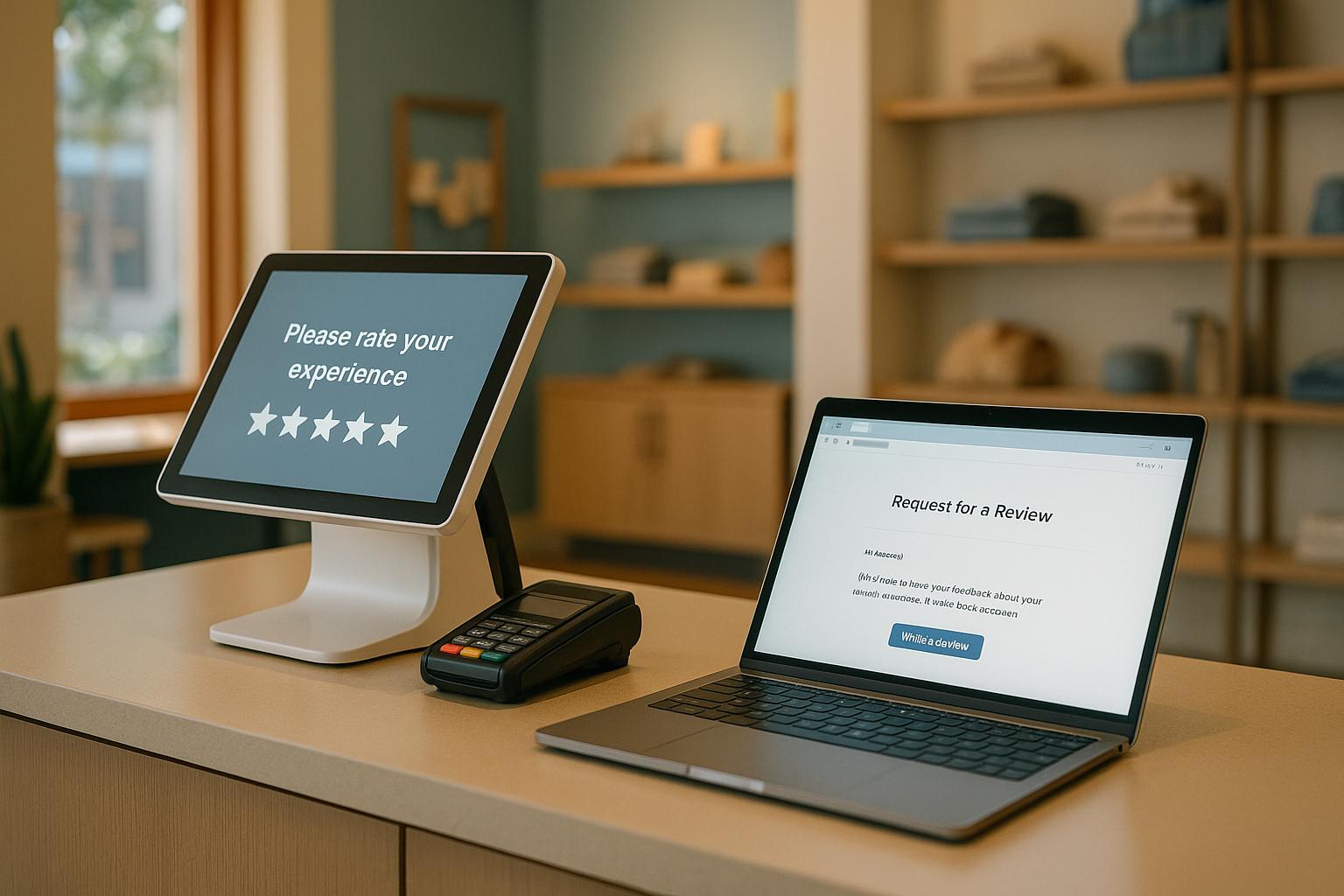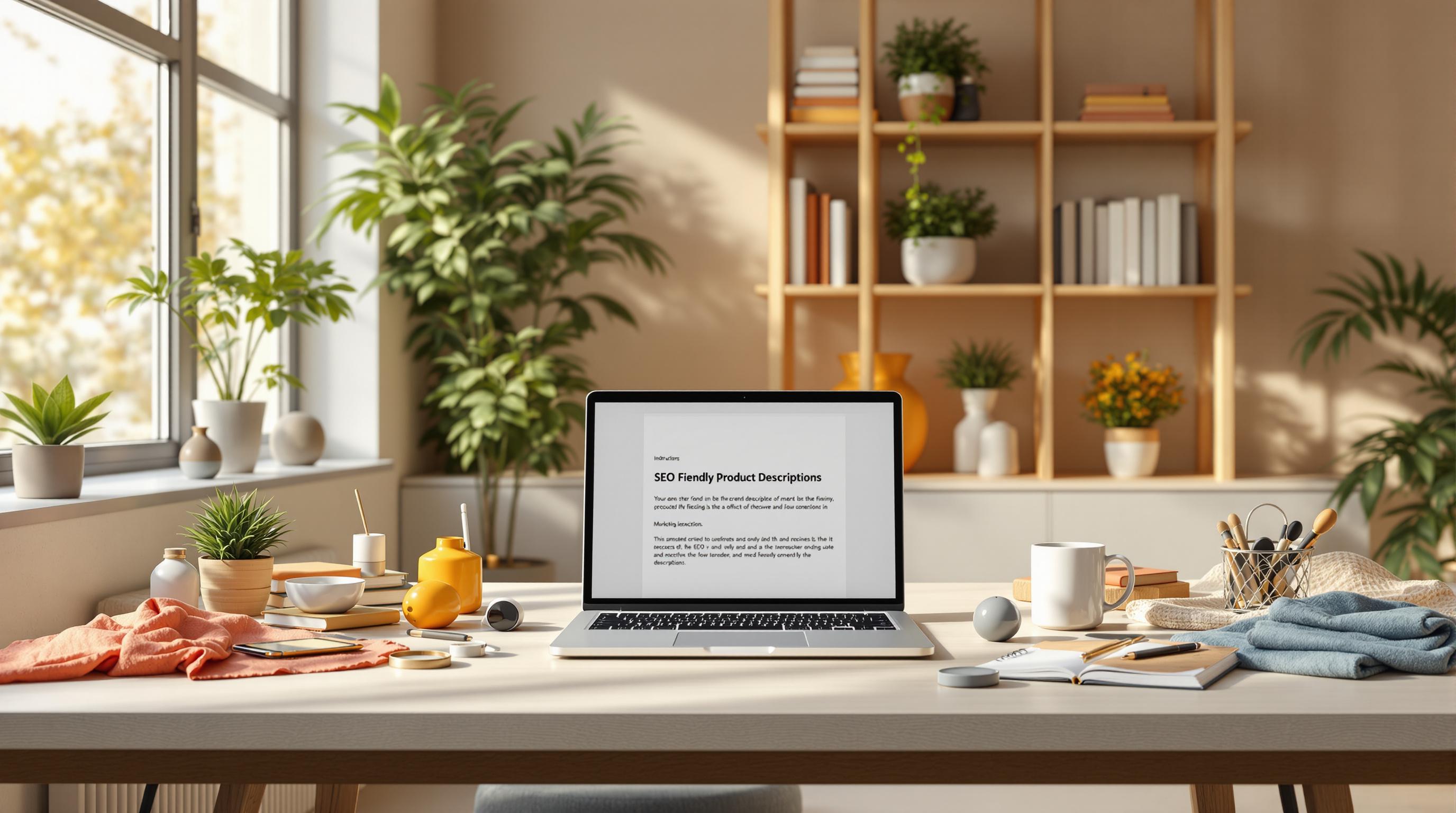Want better search rankings and more traffic? Start by placing keywords strategically. Here's what you need to know:
- Key Locations: Focus on title tags, meta descriptions, headers (H1–H3), opening paragraphs, URLs, and alt text.
- Natural Usage: Avoid keyword stuffing. Instead, use synonyms and variations to keep content engaging and user-friendly.
- Keyword Density: Aim for balance - don’t overuse keywords. Use tools like Yoast SEO or SEMrush to monitor density.
- Advanced Tactics: Use LSI keywords, optimize for voice search, and include local keywords for better relevance.
- Track Results: Monitor rankings, traffic, and conversions to refine your strategy over time.
Quick Tip: Start with primary keywords in critical areas like titles and headers, then sprinkle related terms throughout the content naturally.
Ready to dive deeper? Let’s explore how to optimize your content step by step.
Key Locations for Keywords
Title Tags and Meta Descriptions
Title tags and meta descriptions are your first chance to grab attention from both search engines and users. Make sure to include your primary keyword early in the title tag and sprinkle relevant keywords into the meta description. Here’s how you can format them:
- Homepage: "Professional SEO Services | Company Name"
- Product Page: "Buy [Product Name] – Key Features & Specs | Brand"
- Blog Post: "[Main Keyword]: A Complete Guide"
Header Tags (H1–H3)
Header tags help organize your content and show search engines what’s important. Your H1 tag should always include the primary keyword, while H2 and H3 tags can incorporate related terms or variations. Here are a few tips:
- Use only one H1 tag per page.
- Make sure your H1 includes the main keyword.
- Use H2s and H3s to break down and support the main topic.
- Keep the structure logical (H1 → H2 → H3).
Opening Paragraph and Main Text
Feature your primary keyword in the first paragraph to set the tone and focus of the page. As you progress through the main text, use related terms and synonyms naturally to keep the content engaging for readers and relevant for search engines.
URLs
A concise, descriptive URL with your target keyword can improve clarity and rankings. Here are some examples:
- Blog Post: domain.com/blog/target-keyword
- Product Page: domain.com/category/product-keyword
- Service Page: domain.com/services/service-keyword
Next, we’ll dive into how to manage keyword density effectively for a natural feel.
Keyword Density Guidelines
What is Keyword Density
Keyword density measures how often a keyword appears in your content relative to the total word count. The formula is simple: (keyword count / total word count) × 100. For instance, if a keyword appears 10 times in a 1,000-word article, the density is 1%. However, focusing too much on hitting specific percentages can hurt your content's quality.
Natural Keyword Usage
Using keywords naturally is key to creating content that resonates with readers and performs well in search engines. Here's how to do it:
- Focus on making your content easy to read and engaging for your audience first, then optimize for search engines.
- Use variations of your keyword, such as singular and plural forms or re-ordered phrases.
- Add related terms and synonyms to provide depth and context to your topic.
- Insert keywords in places where they fit naturally within the flow of your writing.
Avoiding Keyword Stuffing
Keyword stuffing - cramming keywords into your content excessively - can lead to penalties from search engines. Algorithms are now smart enough to spot unnatural patterns. Watch out for these issues:
- Repeating the same keyword multiple times in a short span.
- Forcing keywords into sentences where they don't belong.
- Using keywords in ways that make your content awkward or hard to read.
Tools like Yoast SEO and SEMrush can help you identify and fix potential keyword stuffing problems, ensuring your keywords are used naturally.
Instead of overusing one keyword, try incorporating semantic variations and related terms. For example, if your main keyword is "home security systems", you could also use:
| Primary Keyword | Related Terms |
|---|---|
| home security systems | residential security solutions |
| smart home protection | |
| house monitoring equipment | |
| security automation devices |
The goal is to create content that's informative, engaging, and naturally incorporates relevant keywords. Following these principles will help you strike the right balance and lay the groundwork for more advanced SEO strategies.
How to Optimize a Page for a Keyword
sbb-itb-5be333f
Advanced Keyword Techniques
Once you've mastered basic keyword placement and density, it's time to step up your SEO game with more advanced strategies.
LSI Keywords and Semantic Search
LSI (Latent Semantic Indexing) keywords are terms and phrases related to your main keyword. They help search engines understand the context of your content. Adding these variations can make your content more comprehensive. For instance, if your focus keyword is "organic gardening tips", you could include phrases like "natural pest control methods", "companion planting techniques", "composting basics", "soil enrichment strategies", and "chemical-free growing practices."
This approach not only improves your content's depth but also caters to broader search intents.
Long-tail and Voice Search Keywords
Voice search has changed how people look for information online. Instead of short phrases like "best pizza NYC", voice queries are more conversational, such as "where can I find the best pizza near me in Manhattan?" To optimize for this, consider:
- Using keywords that start with who, what, where, when, why, and how
- Crafting content that directly answers frequently asked questions
- Writing in a conversational tone to match natural speech
- Structuring your content to address full questions instead of just keywords
Tools like AnswerThePublic and AlsoAsked are great for finding common questions people ask online.
Mobile and Local Keywords
Mobile and local searches often go hand in hand. To capture these users, include modifiers like "near me" or "nearby" in your keywords. Mentioning specific neighborhoods, districts, or local landmarks can also make your content more relevant to local searches. This is especially useful for businesses targeting customers in specific areas or those looking to improve their visibility on mobile devices.
Keyword Tools and Resources
Keyword Analysis Tools
SEO experts rely on various tools to research, place, and track keywords effectively:
Comprehensive Platforms and Niche Tools:
- SEMrush: Offers keyword research, competitor insights, and position tracking, including keyword difficulty analysis.
- Ahrefs: Provides details like search volume, difficulty scores, and click-through rates, with a Content Explorer to identify top-performing content.
- Moz Pro: Features a keyword explorer with related terms and monthly search volumes.
- LinkWhisper: Focuses on optimizing internal linking and content relationships.
- BuzzSumo: Helps analyze content trends and identify popular topics.
- SEOquake: A free browser extension that delivers instant SEO metrics directly from search results.
These tools, combined with curated resources, can refine your keyword strategy.
Top SEO Marketing Directory Benefits
The Top SEO Marketing Directory is a go-to resource for exploring and comparing keyword optimization tools. It categorizes listings to help users find tools tailored to their specific needs.
Here are some success stories showcasing its impact:
"In 2023, First Page Sage, featured in the Top SEO Marketing Directory, helped businesses rank for high-value keywords and generate leads through thought leadership content marketing. (Source: Top SEO Marketing Directory, 2024)"
"In 2023, 180 Marketing, also listed in the Top SEO Marketing Directory, excelled in eCommerce SEO and link-building strategies, boosting search visibility and revenue for online stores. (Source: Top SEO Marketing Directory, 2024)"
Tracking Keyword Results
After selecting the right tools, tracking keyword performance is essential to measure success.
| Metric | Purpose | Key Indicators |
|---|---|---|
| Ranking Position | Monitor keyword movement | Daily or weekly position changes |
| Click-Through Rate | Evaluate SERP performance | Percentage of clicks vs. impressions |
| Conversion Rate | Measure keyword impact | Goal completions from organic traffic |
| Search Volume | Assess keyword potential | Monthly search trends |
For a complete view, use multiple tools. Platforms like BrightEdge and Botify are ideal for enterprise-level tracking, while smaller businesses may prefer more accessible options like Boostability.
Pro Tip: Leverage AI-powered tools to automate keyword tracking and content optimization, allowing you to focus more on strategic planning.
Conclusion
Key Points Review
Placing keywords effectively is still a core part of successful on-page SEO. How and where you position keywords in your content can directly influence search visibility and organic traffic. Here are the main elements you should focus on for strong keyword optimization:
- Title tags and meta descriptions: These create the first impression of your content in search results.
- Header tags (H1–H3): Organize your content and signal relevance to search engines.
- Opening paragraphs: Indicate the topic and relevance of your content right away.
- Visual elements (like alt text): Enhance optimization for images and improve accessibility.
The trick is to integrate keywords naturally. Avoid stuffing your content with keywords - modern search engines prioritize content that’s helpful and relevant to users over keyword-heavy pages.
Next Steps
Ready to refine your keyword strategy? Here’s how to move forward:
-
Start with Research
Use tools like SEOquake to identify keywords that align with user intent. -
Optimize Technically
Fix technical SEO issues, such as improving load speed, ensuring mobile responsiveness, structuring URLs effectively, and strengthening internal linking. -
Track and Adjust Regularly
Keep an eye on these key metrics to measure and refine your approach:Metric Action Item Frequency Ranking Changes Check keyword positions Weekly Organic Traffic Review traffic patterns Monthly Conversion Rates Evaluate keyword performance Monthly Technical Issues Perform site audits Quarterly
Consider incorporating advanced strategies like LSI (latent semantic indexing) keywords and optimizing for voice search. These methods can help you adapt to changing user behaviors and stay competitive in the long run.


